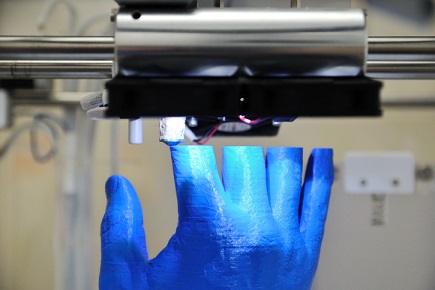
In China, 3D printers have been used to build houses. In space, this same technology is being used by astronauts to print parts required on space shuttles. There are even 3D printers that produce edible burgers, pizza and chocolate.
With this in mind, it is perhaps not surprising that this innovation is making waves in science, technology, engineering, and mathematics (STEM) education.
But while 3D printing has exploded across schools, there is a learning curve that many staff and students will inevitably need to navigate.
Adam O’ Neill, managing director Australia, Y Soft, said that while it’s great to see teachers and students get excited about the possibilities of 3D printing, it’s important to make sure 3D technology is more than just hype.
“To get a return on investment, 3D printers need to serve as practical and purposeful teaching tools,” O’Neill said.
Below, Y Soft identifies five considerations to help schools determine if they’re prepared for 3D printing:
1. How students will access the printer
Schools and universities want to protect students from injury and prevent other students from taking 3D objects that don’t belong to them. These concerns are mitigated with careful policing, often limiting student access to the printer. An enclosed 3D printer with lockable doors helps ensure safety and prevents theft. This means that schools can place the printer in a more accessible location and encourage students to use 3D printing in daily activities.
2. Where the 3D printer will be physically placed
Location is key for the successful adoption of 3D printing. Students should be able to use the 3D printer outside of formal lesson times and interact with it regularly. This means that the ideal location for a 3D printer should be an easily-accessible area of the school or university and somewhere that won’t disturb classes.
3. What skills and software are required
3D printing begins with a digital file of a 3D model design, which requires the user to work with a computer-aided design (CAD) program. While some schools and universities may have in-house expertise working with design files, many non-technical schools and universities don’t. 3D printing is becoming more mainstream and there are several free and paid sites available that contain files that 3D enthusiasts have shared. These sites can be a good starting point before investing in CAD software.
4. How to manage 3D printers
Managing 3D printers requires specialist knowledge. A service agreement with a third party for a 2D print environment can help schools better position themselves to add 3D printers. Schools and universities without any formal support should review and optimise their current printing environment. Choosing a 3D print provider that can also handle 2D paper printers can also benefit schools with volume discounts.
5. How to cover the costs of 3D printing
In addition to the cost of the 3D printer schools and universities must consider the material involved in printing 3D projects. Similar to how the ongoing management and consumable costs can be charged to students on a pay-as-you-go service for paper printing, the same concept can be applied to 3D printing.
Adam O’ Neill said, “When schools and universities have clearly addressed each of these factors, they’ll be well-placed to achieve a strong return on their investment in 3D printing. Giving students access to this technology is important for their development and eventual ability to contribute in the workplace.”
Related stories:
4 benefits of 3D printing
How 3D printing transforms learning


